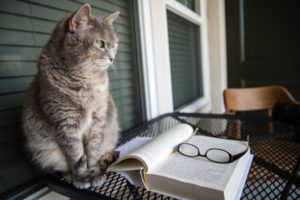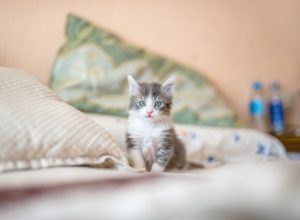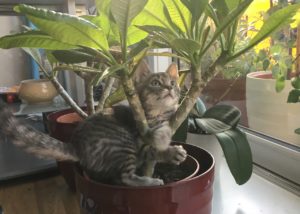While it might not be the nicest topic to discuss, dealing with cat’s litter box is a major part of caring for your feline friend. While many owners like to keep the litter box out of sight and out of mind, its an essential part of your cat’s day. There is an abundance of choices to make about your cat’s litter box. Between different types of box, different types of litter, scooping, and keeping the mess contained, the topic can be a minefield.
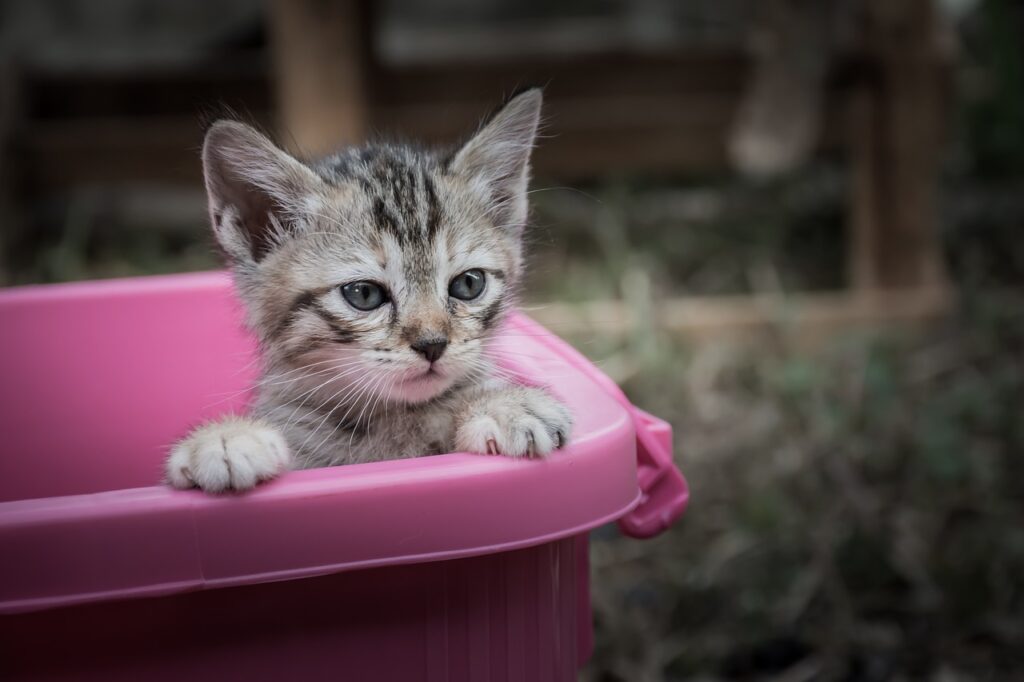
When new cat owners first bring their kitten home, they might be a bit unsure of how to set up a litterbox. Choosing the right materials and keeping the box in the right place can get your cat started on the right foot in their new home. Doing it wrong could lead to your kitten avoiding the litter box and causing a lot of unnecessary mess.
What Material is Best For Your Cat’s Litter Box
You would think something as minor as the material used in your cat’s litter box would be simple, but there are many different choices. As with a lot of things, the most popular and standard materials aren’t always the best. There are a few different types of litter material available to you and your cat, they can be divided into three general categories.
Clay litter is by the far the most popular type of filling for your cat’s litter box. It comes in two blends, clumping and non-clumping. Clumping cat litter is typically made from bentonite, a material with such diverse and industrial uses that it might seem strange that it’s in your cat’s litter box. This litter is cost-effective, relatively mess-free and does a good job of hiding odours. It is not biodegradable. This litter will sit in a landfill forever, which is kind of a problem. It can also be toxic to cats, so it’s not a good choice for curious kittens.
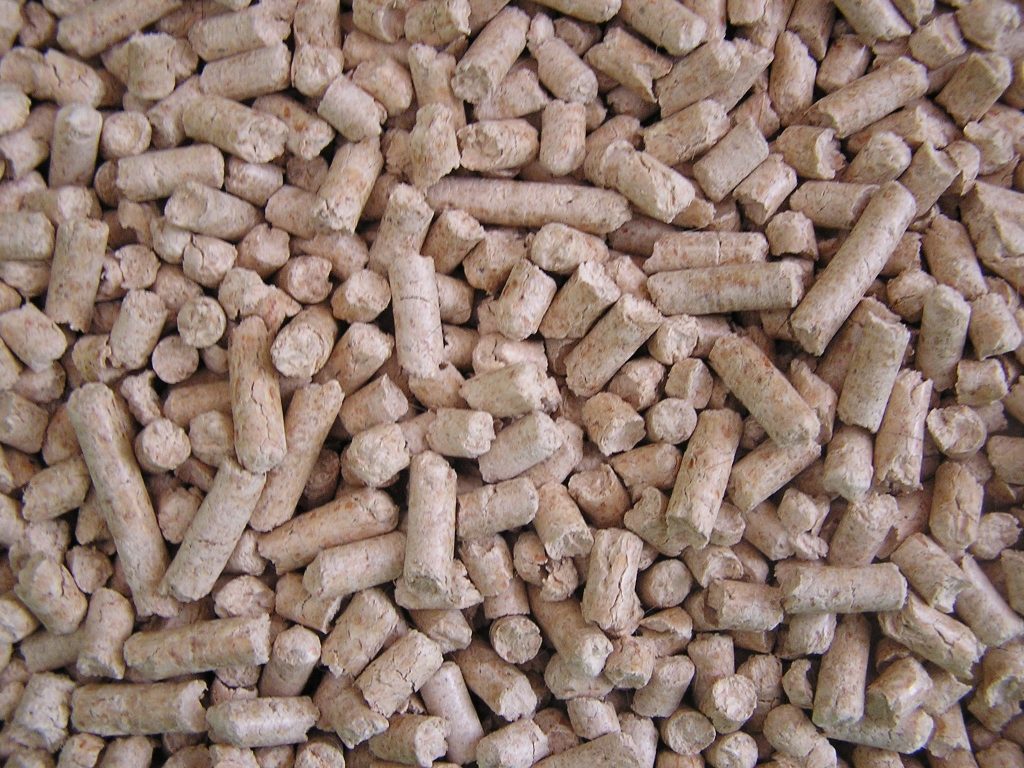
Clay non-clumping litter is usually made from materials other than bentonite but with a similar consistency. These forms of litter don’t do as good a job at hiding the odour of your cat’s output so will require cleaning more often. The upside is that they aren’t as dangerous when ingested.
Natural Cat Litter
There are also some natural alternatives for your cat’s litter box, often made from recycled corn, wheat, pine, or wood. These are made from byproducts of other natural products, making them relatively inexpensive. The big appeal of these materials is that they are biodegradable. These often don’t hide smells as well as clay litter, so will need changing more often. These natural alternatives are a better choice for cat litter even if they are a little more inconvenient. They don’t bring the risk of poisoning your cat or contribute to the growing landfills.
Whichever material you chose for your cat’s litter box, buying online in bulk is usually considerably cheaper than the small retail bags. You should consider buying these big sacks instead of the expensive smaller portions.
What Type of Litter Box Should You Use
The first step to making sure your cat’s litter box is right for them, is the choice of litter box itself. The first thing you have to consider is the size. Your cat’s size will vary depending on if you’ve gotten a mixed-breed or pure breed cat. You should choose a litter box that is big enough for your breed of cat. Cats like to play around in the litter box by pushing litter around to bury their waste.
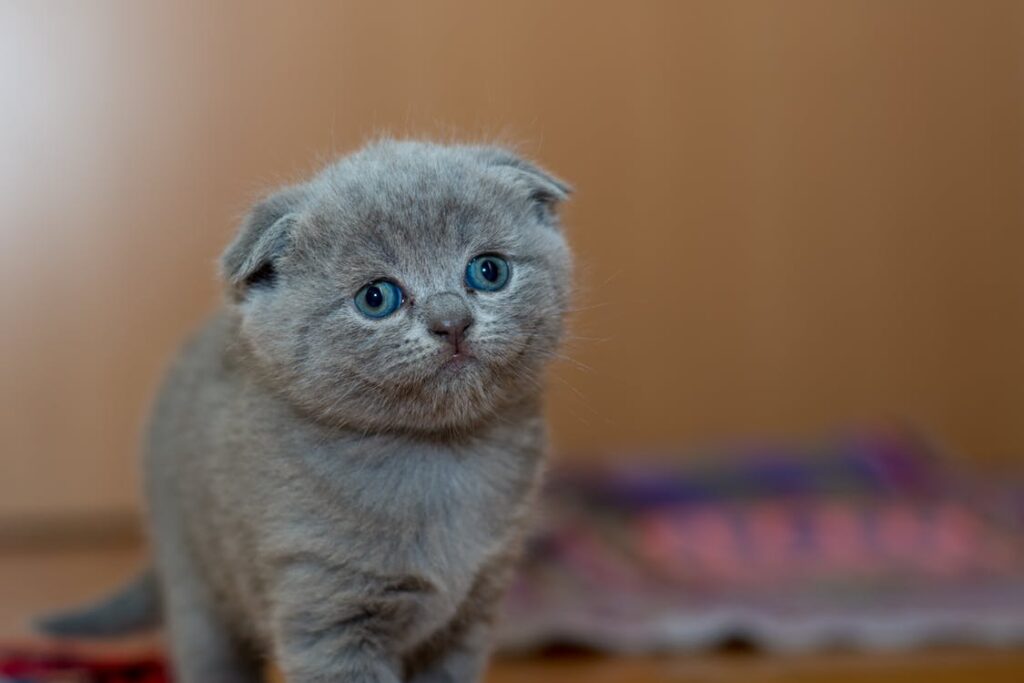
Covered litter boxes do a great job of masking the scent, but they have quite a few drawbacks. The first is that your cat will smell that scent when they use it. It might save you from the smell, but this strong built up odour can be very offputting for your pet. Your cat’s litter box should be a place where they are comfortable. Closed litter boxes can make them claustrophobic and increase the chance they will avoid using it. While it is easy to be tempted to use a covered litter box and not deal with the problems yourself, it is much kinder for your cat to use a standard open litter box.
Once you’ve considered these factors, you’re left with a less than pleasant conclusion. Essentially, the types of litter box that make the work easier for you aren’t good for your cat. It is unfortunate, but you should be aware of the work you’ll have to put in when keeping your cat’s litter box clean for use.
Keeping Your Cat’s Litter Box Clean
Even the tidiest of cats will occasionally make a mess around their litter box. Litter will get kicked out even in the biggest box. Keeping your cat’s litter box on a plastic mat can make clean-up a lot easier. This saves your cat’s litter box from getting on your floor, and the mat can just be emptied in the bin. Mini-hoovers are another option for cats who can kick pellets particularly far. These smaller hoovers save you from having to hoover an entire room every day.
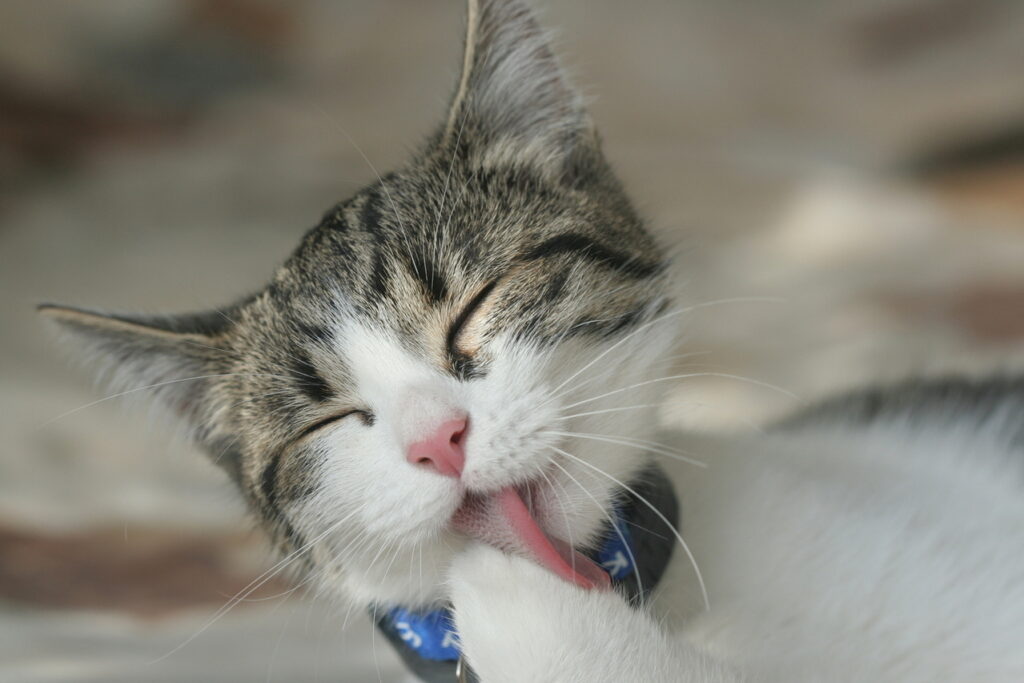
A cat’s litter box should be regularly emptied, but you should also be scooping bigger messes out more frequently. Scooping the “remains” out of the litter box more often is a good way to extend the life of your litter. You should be scoop cleaning the box every day to prevent the problem from building up. Of course, scooping won’t get all of the waste every time. You should change the full litter once or twice a week. If you keep to this schedule, you should have a clean litter box that doesn’t require much more work.
Choosing A Litter Scoop
There are a few factors to consider about choosing a scoop for your cat’s litter box. You should be looking for a scoop that is durable and easily cleaned. A metal scoop can be one of the easiest types to wash. These scoops last a lot longer than plastic ones. Consider a good scoop an investment, it might cost more than the plastic scoops but it can last a lifetime. Your scoop needs enough holes to let unused litter escape.
You should aim for a litter scoop which is big enough to comfortably pick up anything your cat leaves behind. A scoop that is too small will make getting anything out a balancing act. One that is too big will take half the clean litter out with each scoop. Much like the litter box itself, the ideal size will depend on the size of your cat. It should be easy enough to assess if your cat is large enough to warrant a big scoop. Bite the bullet and take a quick look at what it is you’re going to be scooping, it’ll save you time in the long-run.
How Many Litter Boxes Do You Need?

You should make sure you have enough litter boxes around the house for your cat to comfortably be in reach of one. If you have multiple cats, a good rule of thumb is to have one for each cat and then a spare. This will ensure that every cat is capable of reaching a litter box even if one is already in use. Cat’s probably won’t pay much attention to which litter box they use, so it is silly to try and designate each box to an individual cat. If they naturally start to use one box each, that’s good, but you shouldn’t try to force this behaviour on them.
Where to put your cat’s litter box is another issue. It mainly comes down to where you’re comfortable having one. It should be somewhere where your cat can easily access it at all times. A room which your cat has constant access to is the best choice. You should consider the smell and ensure it is not somewhere where it will disturb you. Cats will naturally try and use the litter box in relative privacy, their litter box should be somewhere which will give them that privacy.
What is Convenient Is Sometimes Better
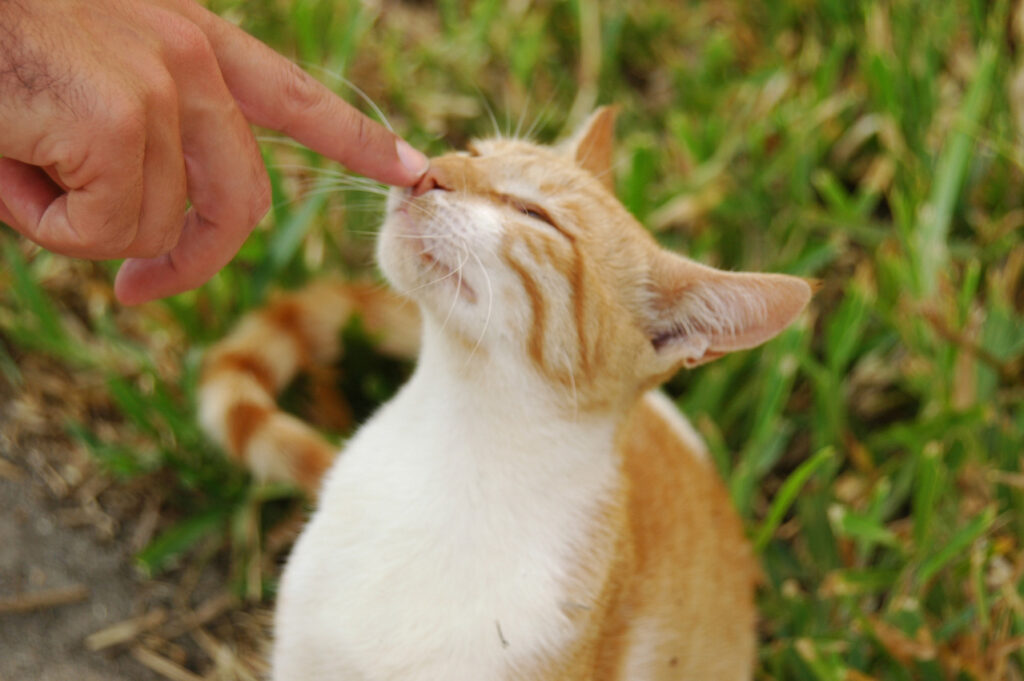
Liners for a cat’s litter box can make the process of changing the litter much easier. It is one of the few things you can do to help make the cat’s litter box less hassle for you without being detrimental to them. They can make the job of cleaning the litter much easier. They do have some drawbacks though. Cats will claw at their litter which can rip the liner, you should be prepared for this possibility. It can also upset a cat if the liners are too close to the surface. If you plan on using liners, you need to ensure there is space for at least a few inches of litter above the liner. This should allow you the convenience of using a liner without upsetting your cat.
It can be tempting to go for shortcuts with your cat’s litter and choose options that prevent you from having to deal with your cat’s waste. For the most part, clumping litter and closed litter boxes make it easier on you but harder on your cat. If you want your cat to be happy and healthy, you do have to deal with the unpleasant job of handling their waste. If done properly, you can keep their litter box relatively hassle-free without sacrificing too much.



